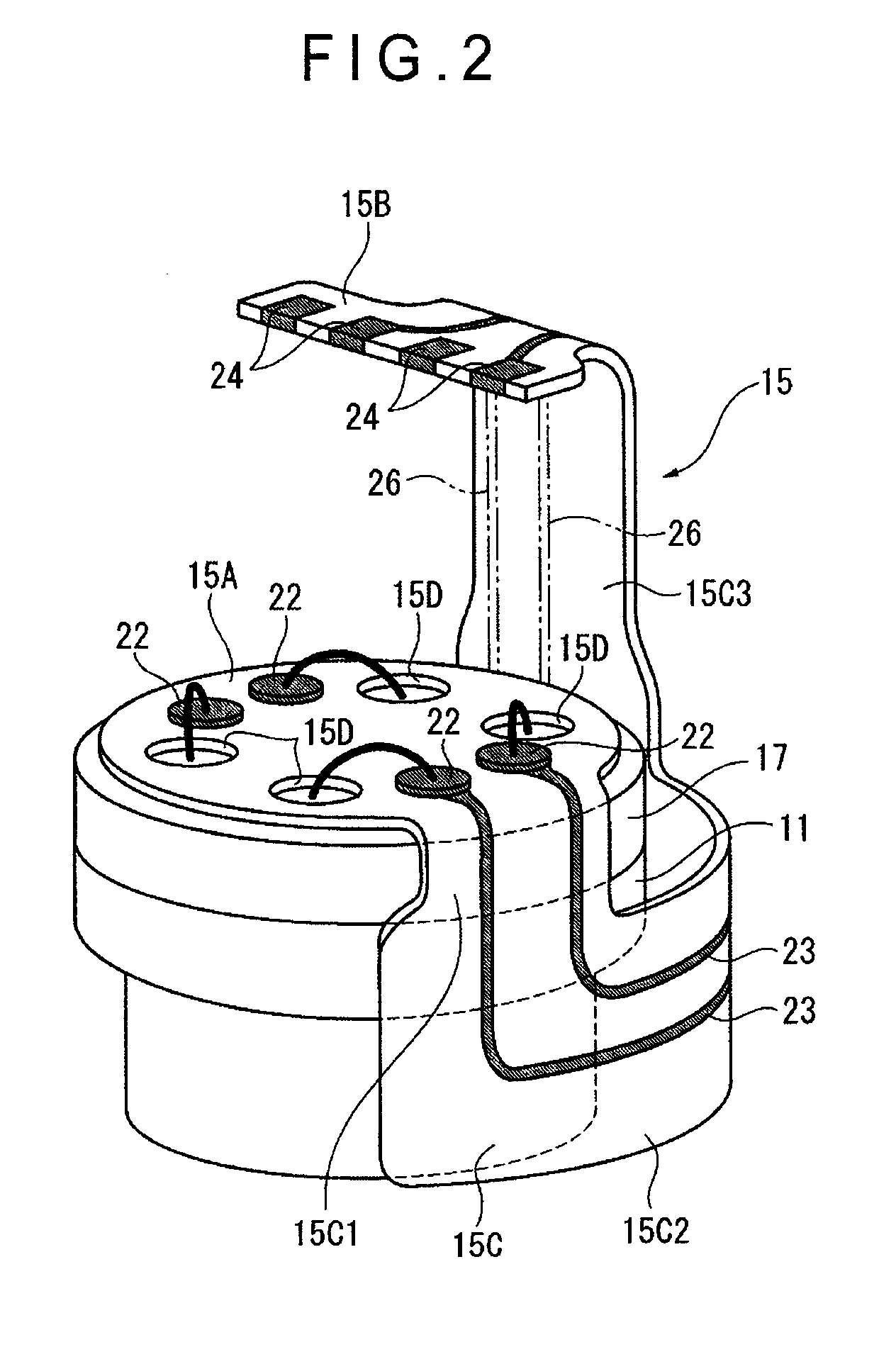Sensor and manufacturing method of sensor
- Summary
- Abstract
- Description
- Claims
- Application Information
AI Technical Summary
Benefits of technology
Problems solved by technology
Method used
Image
Examples
Embodiment Construction
)
[0032]An exemplary embodiment of the invention will be described below with reference to attached drawings.
[0033]FIG. 1 is a cross section of a pressure sensor of the exemplary embodiment.
[0034]As shown in FIG. 1, the pressure sensor 1 is provided with: a joint 10 having a flange 10A at an intermediate position thereof; a diaphragm 11 (sensor element) provided on a first end of the joint 10; a block 12 provided on the flange 10A of the joint 10; a housing 13 and a circuit board 14 respectively provided on the block 12; a flexible board 15 connected to the housing 13 and the diaphragm 11; and a terminal 16 supported by the housing 13.
[0035]The joint 10 is a molded metal component and is provided with a pressure port 10B extending from the first end to a second end opposite thereto.
[0036]A screw 10C to be screwed into a pipe in which to-be-measured fluid is flowed (not shown) is provided on an outer circumference of the joint 10 on a side adjacent to the second end relative to the fl...
PUM
| Property | Measurement | Unit |
|---|---|---|
| Angle | aaaaa | aaaaa |
| Flexibility | aaaaa | aaaaa |
| Area | aaaaa | aaaaa |
Abstract
Description
Claims
Application Information
 Login to View More
Login to View More - R&D
- Intellectual Property
- Life Sciences
- Materials
- Tech Scout
- Unparalleled Data Quality
- Higher Quality Content
- 60% Fewer Hallucinations
Browse by: Latest US Patents, China's latest patents, Technical Efficacy Thesaurus, Application Domain, Technology Topic, Popular Technical Reports.
© 2025 PatSnap. All rights reserved.Legal|Privacy policy|Modern Slavery Act Transparency Statement|Sitemap|About US| Contact US: help@patsnap.com



